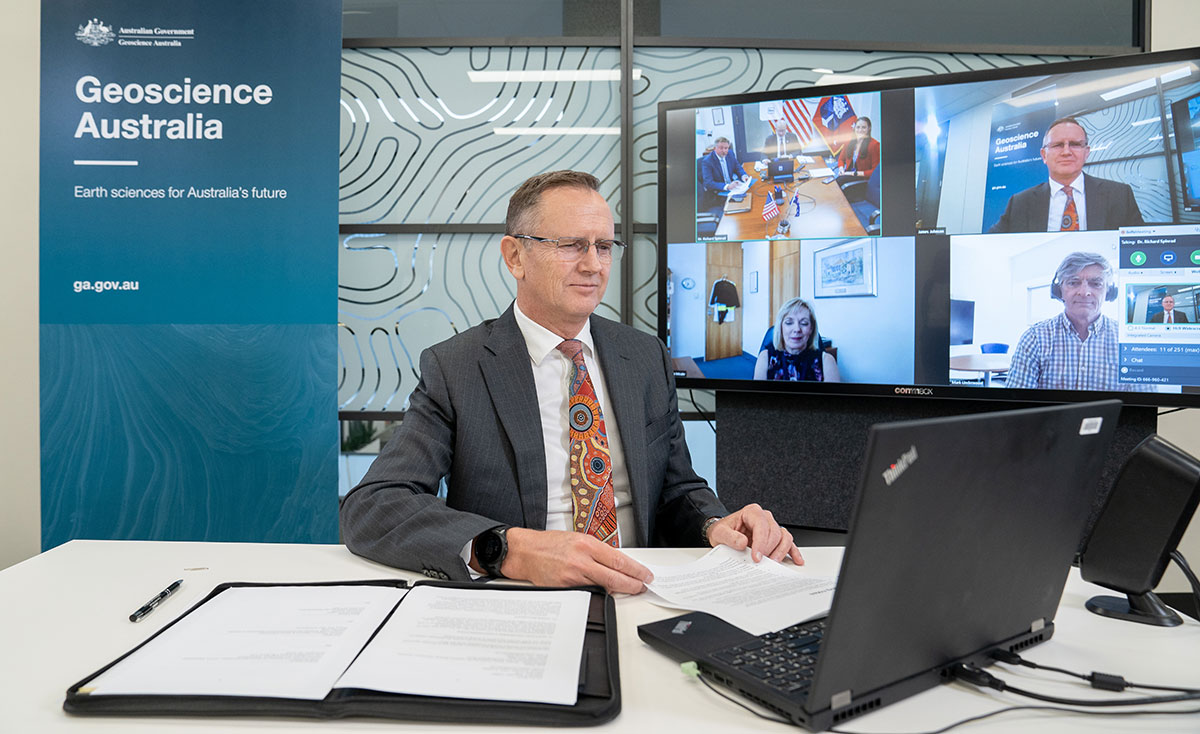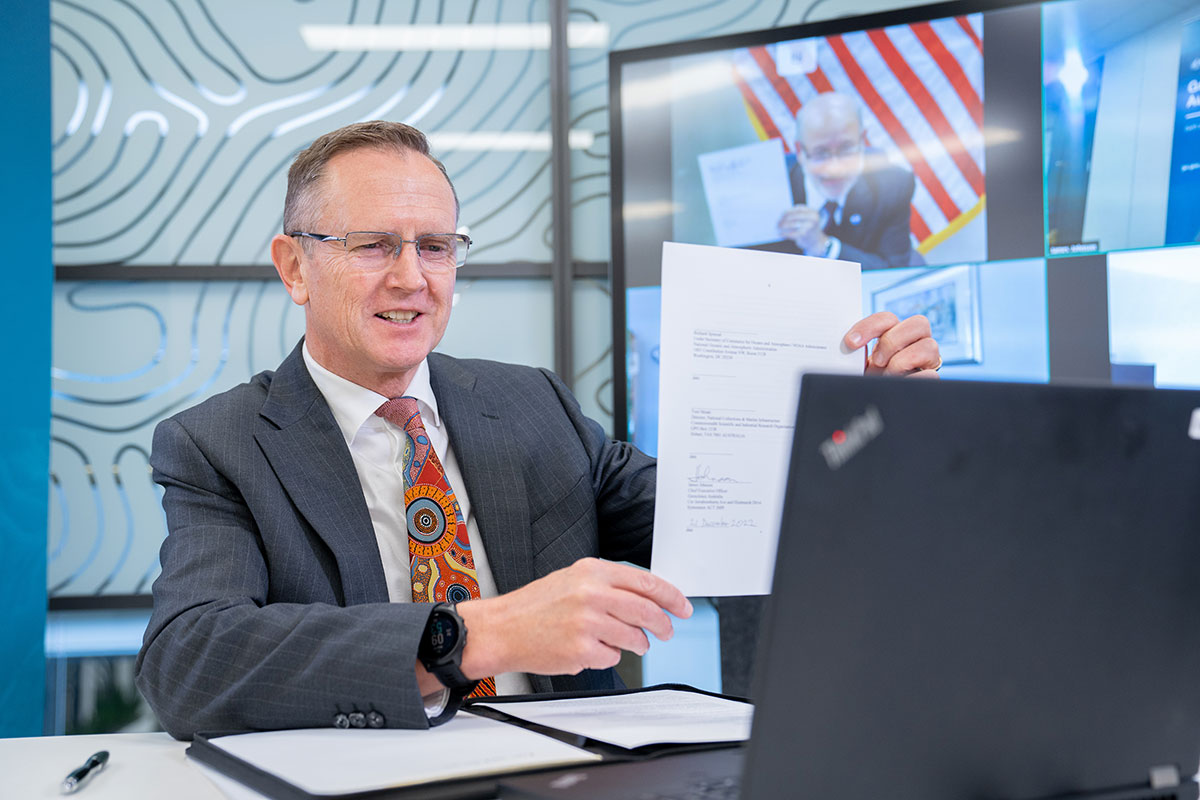News
New international agreement to take ocean science forward
Published:21 December 2022
New international agreement to take ocean science forward
Geoscience Australia, the CSIRO and the United States’ National Oceanic and Atmospheric Administration (NOAA) have signed a Memorandum of Understanding (MoU) to cooperate on ocean exploration and mapping.
Geoscience Australia, the CSIRO and the United States’ National Oceanic and Atmospheric Administration (NOAA) have signed a Memorandum of Understanding (MoU) to cooperate on ocean exploration and mapping.
This new relationship was formalised in a virtual signing ceremony this week.
Geoscience Australia CEO Dr James Johnson said the MoU would guide scientific and technical cooperation into the future.
“Science is fundamentally collaborative,” Dr Johnson said. “When we work together, we can achieve truly outstanding science. Now we’re expanding our collaboration across government organisations, and across nations, to bring our best people together to work towards shared goals, and to find new and innovative solutions to common challenges.”
This MoU will be the first time our science organisations have entered into a cooperative agreement to focus on ocean exploration.
For Geoscience Australia, this collaboration is an important step to meeting our strategic priority to manage Australia’s marine jurisdiction.
“Our goal is to lead collaboration across government, industry and academia to map and characterise Australia’s seabed. The new MoU will facilitate the exchange of scientific resources and knowledge to deliver this outcome,” Dr Johnson said.
According to the Nippon Foundation-GEBCO Seabed 2030 Project, only 23% of our global ocean floor is mapped, leaving most areas of the seabed unknown. Dr Johnson said that a better understanding of our ocean environment helps all levels of government to manage and protect it for the benefit of all.
“Our oceans have a huge impact on our lives. The Blue economy has considerable potential for growth, and sustainable use of our oceans relies on a thorough understanding of this environment.
“We need to map and understand our ocean environment to make sure it continues to bring great benefits to Australia and globally,” Dr Johnson said.
“Ocean mapping also helps us understand precious marine habitats. It allows us to learn about undersea geohazards and how to avoid them. We can identify how tsunamis may travel across the ocean and where they may reach land. And we can support governments and industry in the development of offshore infrastructure such as wind farms for renewable energy and undersea cables for communications.”
Dr Johnson described the MoU as a natural alliance between three organisations that have mutual interests.
“We have always had positive working relationships with CSIRO and NOAA and we now have an agreement to support implementation of our shared objectives that will remain robust and relevant into the future,” Dr Johnson said.
“And it is flexible. We would love to see more government entities join with us to expand the considerable pool of talent and the knowledge base that we have captured in this agreement.”
During the signing ceremony, NOAA’s Under Secretary of Commerce for Oceans and Atmosphere & NOAA Administrator Dr Richard Spinrad highlighted how collaboration with Australia will support NOAA’s mission to serve U.S. science and stewardship priorities.
“We cannot fully understand our ocean without international collaboration,” Dr Spinrad said. “Working together with our Australian partners will help accelerate our important shared goals of understanding and mapping the ocean to advance weather prediction, ocean health, climate solutions, and commerce.”
CSIRO Marine National Facility Director Toni Moate said the partnership would harness world-class research capability and expertise, for national and international benefit.
“Ocean mapping information is vital in helping us better understand and manage our oceans and, in operating the Marine National Facility on behalf of the nation, CSIRO is a key contributor,” Ms Moate said.
“In a world with increasingly interchangeable data, collaborating with our neighbours will help all partners make greater progress together.
“Together, with Geoscience Australia and NOAA, we will open the new frontier of ocean science and mapping, bringing the Blue Economy closer for our two countries and in delivering support to the Pacific region.”
Under the new MoU, Geoscience Australia, CSIRO, and NOAA will bring together their experts in ocean exploration and seabed mapping, enabling all organisations to benefit from the combined skills and experience that each agency brings to the table.
“By sharing our data, tools and insights, all three organisations and both countries will benefit from a joint approach to maximise the value of investment in ocean exploration and mapping,” said Dr Johnson.
“The world will face multiple challenges over the coming decades. We will be far better equipped to meet them with great partners like CSIRO and NOAA working with us.”
Contact:
Phone:
Email:






